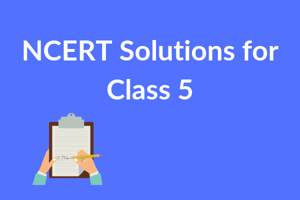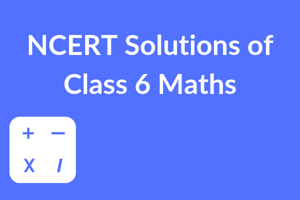Mathematics has been an important subject since class 1. 5th standard maths syllabus includes some...
Why Class 5th Maths is a Foundation for Higher Studies
Early learning plays a crucial role, whether its maths or any other subject. Like anything else, cognitive skills in a child develop gradually, and it is necessary to guide them through the process step by step, helping them understand the basic concepts behind complex issues. Class 5 maths plays a crucial role in helping students understand many important fundamentals of the subject. 5th class maths indeed lays a foundation for students to understand higher mathematics. Therefore, students must not grasp but understand 5th class maths concepts with clarity. For this, there are many ways in which teachers and parents can help.
The educational trend all over the world has constantly been evolving. Starting from the ancient times where oral culture was popular, followed by learning from manuscripts, to the modern times where educational boundaries and institutions are more defined to the most recent ones, there are no boundaries (the e-learning ecosystem). This evolution has undoubtedly registered various ways and points of research on how learning and teaching are related and how to accelerate both of them by modifying the techniques.
Let’s now have a brief overview of the syllabus as per the NCERT 3th class maths book to better understand how it comprises the important concepts that would define strong basics for complicated mathematical problems. The maths questions for class 5 mainly span ten fundamentals. These include Decimals and Place Value, Fraction, Division, Multiplication, Algebra, Measurement and Geometry. A kid continues studying about HCF and LCM in mathematics class 5. They will also learn how to add, subtract, multiply and divide factors and decimals. In addition, new ratio and percentage ideas are to be presented in mathematical class 5. Geometry with the area and perimeter issues and the introduction of volume in the course will be further advanced.
Blog Contents
Gamification of class 5 maths solutions
Recently, there have been many modifications in the teaching methods to help students learn better and faster. Gamification of maths has been one of the most innovative and helpful ways students can easily understand these concepts while enjoying their time learning them. At an early age, when a child is in 5th standard or lower classes. Learning through these maths games can help in developing their mind better and in a more efficient manner.
For example, decimals on a place value chart can be taught to the students of 5th standard with the help of a game where a child requires to fill the blanks in the given places after identifying the position for the given numbers. This would help a child understand place value as decimals can be a little confusing for kids. Using audio visuals for teaching is not a new trend now. But combining this with innovative gamification techniques ensures that the student is well-engaged in the process and is highly interactive while solving the problems in a fun way. This process can be particularly beneficial for kids with a maths phobia and treat it as an unbearable subject. Converting 5th standard maths into easy games can help boost a child’s cognitive skills and build their interest in the games and the concepts. Sooner or later, they would themselves wish to solve class 5 maths question papers all by themselves to test their knowledge. This is how you play with a kid’s mind to convert difficult-appearing subjects into easy and fun-going solutions.
With the installation of smart boards in the classroom and introduction to various learning management systems for class 5 maths, many schools and institutions adopt this gamification technique of the 5th class maths syllabus. If not complete gamification, they turn them into interactive activities and projects where students need to apply their creative minds and engage more with the problem-solving process. Hence, this is a great way to modify the teaching techniques that also promote the inclusion of students from various sector and skillsets. As a well-known fact, every student has their own pace and way of learning. This also depends upon each child’s interest. With such techniques and modification in the teaching techniques for class 5 maths, the education system promotes the inclusion of students with all skill sets and pace of learning.
Class 5 maths syllabus and how to understand it
Let us try to understand the foundational mathematics of class 5 by analyzing the chapters given in the 5th class mathsbook as per the ncert syllabus. The main chapters in the 5th standard maths book are as follows:
Chapter 1 – The Fish Tale
Chapter 2 – Shapes And Angles
Chapter 3 – How Many Squares?
Chapter 4 – Parts And Wholes
Chapter 5 – Does it Look The Same?
Chapter 6 – Be My Multiple, I’ll Be Your Factor
Chapter 7 – Can You See The Pattern?
Chapter 8 – Mapping Your Way
Chapter 9 – Boxes And Sketches
Chapter 10 – Tenths And Hundredths
Chapter 11 – Area and Its Boundary
Chapter 12 – Smart Charts
Chapter 13 – Ways To Multiply And Divide
Chapter 14 – How Big? How Heavy?
The chapter on “Fish Tale” begins with a fundamental concept of various items’ size and form, and dimensions. Similarly, the chapter Shapes and Angles discusses different object angles. In addition, the students will be familiar with the perimeter and surface idea of different shapes and fractions in class 5 mathematics. Apart from the subjects’ linear, reflexive and rotational symmetry, ‘Class 5 Maths’ also discusses numerous patterns and their application in our lives. The multiples and factors of a number plus number multiplication and division and usage of fractions and decimals are also included in the curriculum. The chapter, “Mapping your Way”, enables pupils to understand maps and scaling, which will be valuable in real life. Class 5 Maths also teaches 2D and 3D object visualization through the Boxes and Sketches chapter. It also features a section on the dimensions of various forms and dimensions. It explains finally how to measure the volume and masses of items that are useful for the future.
A dynamic subject and a problem-solving progression
Being a progressive and dynamic topic, mathematics changes and moves ahead continually. The human mind is challenged to use its untapped sections of the brain and needs to think beyond the boundaries. One should connect the topic to daily life to appreciate mathematics and realize its applications and potential. The topic concentrates on thinking and reasoning abilities and focuses on improving the children’s capabilities for actual lives. In the mathematics of the ‘5th standard’, there is a huge focus on the question of problem-based knowledge and concerns in the class 5 maths solution. It starts with the construction of concepts fully before the basic explanations. Without saying, one cannot skip rigorous practice to become fully confident in the concept.
During the early years of school life, children see and explore their world’s mathematical aspects. They compare volumes, detect patterns, operate in space and confront genuine issues, for instance, balancing a large block or sharing a big bowl of snacks equally with a friend. These are some of the real-life challenges where kids apply basic mathematics without realizing it. Class 5 maths solution mainly consists of such understandings.
How can teachers help students to better understand 5th class maths?
Teachers and other important education professionals, aiming to train students between 3-6 years in high-quality class 5 maths should:
- Enhance the inherent interest of kids in maths and their willingness to utilize it to understand their physical and social environment
- Construct the children’s experience and their understanding, including their families, language, cultural and community backgrounds.
- Build math curriculum and instructional strategies on cognitive language, physical, social, and emotional development understanding.
- Deploy lessons and teaching methods that increase problem-solving and reasoning processes and mathematical ideas, communications and connections for young children.
- Build a connection between mathematics and other activities and vice versa.
- Enhance children’s learning by careful and continuous evaluation of all the mathematical knowledge, abilities and techniques of children.
Early childhood is marked by a foremost basic to mathematics and a good foundation in arithmetic. These excellent starts represent all the features of successful early childhood learning: A strong understanding of development and learning for children; a strong community of teachers, families and children; research-based knowledge and learning curricula for early childhood; ongoing assessment in the interests of learning for children; and respect for the families, cultures and communities of young children, promoting the inclusion. To accomplish the vision, educators, upper management, education leaders, and families need to cooperate to raise awareness of the importance of mathematics in early education, inform others of sensible approaches to mathematical learning, and develop essential resources to promote good mathematical knowledge in every student. Therefore, “5th class maths” is a major foundation stone for students to understand higher-level mathematical problems and solve them confidently.


